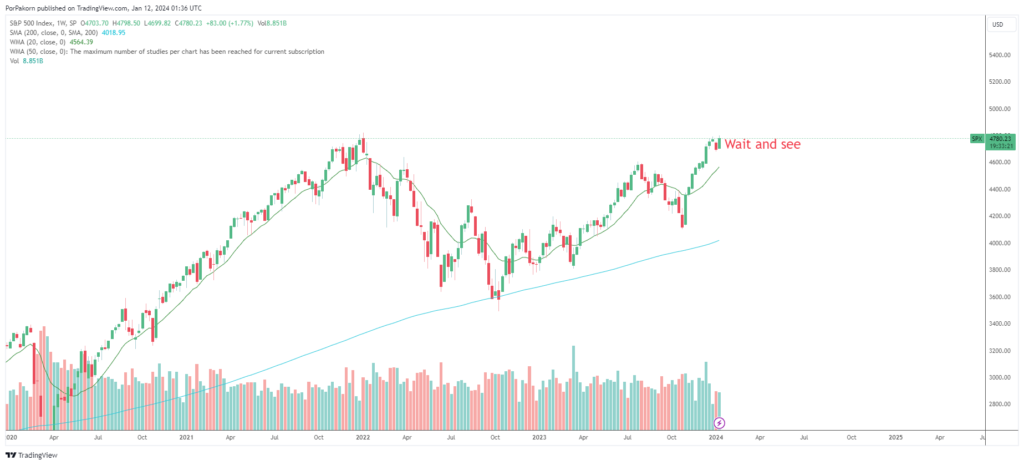Introduction: U.S interest rate analysis
In December 2023, the United States witnessed a notable uptick in the annual inflation rate, soaring to 3.4% from the previous month’s five-month low of 3.1%. This unexpected surge surpassed market expectations of 3.2%, primarily driven by a deceleration in the decline of energy prices. Notably, energy costs, which had experienced a rapid descent in November, dropped at a slower pace, with gasoline, utility (piped) gas service, and fuel oil all registering milder declines. The nuanced interplay of various factors paints a complex picture of economic dynamics, urging a closer examination of the key components influencing this inflationary trend.
Energy Price Movements
Energy prices played a pivotal role in shaping the trajectory of the inflation rate. Contrary to market anticipations, energy costs exhibited a diminished rate of descent, contracting by 2% in December compared to a steeper decline of 5.4% in November. Gasoline prices experienced a milder fall of 1.9% (versus a substantial drop of 8.9% in the previous month). Similarly, utility (piped) gas service and fuel oil witnessed tempered declines of 13.8% and 14.7%, respectively, indicating a slowdown in the downward momentum. This shift in energy dynamics sparks considerations about the impact of global energy trends on the domestic economy and raises questions about the sustainability of such patterns.
Non-Energy Components
Beyond the energy sector, other components of the Consumer Price Index (CPI) contributed to the nuanced inflationary landscape. Prices for essential commodities like food, shelter, and medical care exhibited a softer pace of increase. However, the moderation in these sectors was juxtaposed against contrasting trends in transportation-related expenses. While new vehicles, apparel, and medical care commodities experienced restrained inflation, transportation services saw a more pronounced increase, hinting at the complex web of factors influencing diverse sectors of the economy.
Core Inflation and Consumer Price Movement
The annual core inflation rate eased marginally to 3.9%, still surpassing expectations but falling below the 4% threshold observed in the preceding period. Comparing November and December, consumer prices registered a notable uptick of 0.3%, marking the most significant increase in three months and surpassing forecasts of a 0.2% rise. This acceleration in consumer prices implies potential implications for purchasing power, household budgets, and overall economic sentiment.
U.S. Interest Rate Analysis
Amidst this intricate tapestry of inflationary dynamics, an analysis of U.S. interest rates becomes imperative. The Federal Reserve, tasked with maintaining price stability and maximizing employment, closely monitors inflation trends. The surge in the annual inflation rate to 3.4% in December 2023 undoubtedly adds complexity to the Federal Reserve’s decision-making process. While the annual core inflation rate remains below the 4% mark, it is crucial to acknowledge that this moderation does not alleviate concerns about sustained inflationary pressures.
The Federal Reserve, historically employing a data-dependent approach, may find itself at a crossroads. The unexpected acceleration in consumer prices, coupled with a nuanced interplay of inflation drivers, demands a careful recalibration of monetary policy. Analysts and investors alike keenly await signals from the Federal Reserve regarding its stance on interest rates. Should inflation persist at elevated levels, the Federal Reserve might face heightened pressure to consider adjustments to interest rates as a means to curb inflationary pressures and maintain economic stability.
Conclusion: U.S interest rate analysis
The surge in the annual inflation rate in the United States during December 2023 introduces a layer of complexity to the economic narrative. Energy prices, essential commodities, and transportation services all contribute to the multifaceted dynamics shaping inflation. Against this backdrop, a careful examination of U.S. interest rates becomes crucial. The Federal Reserve’s decisions in the coming months will likely have far-reaching implications for investors, businesses, and households.







I?¦ve recently started a website, the information you offer on this site has helped me tremendously. Thank you for all of your time & work.